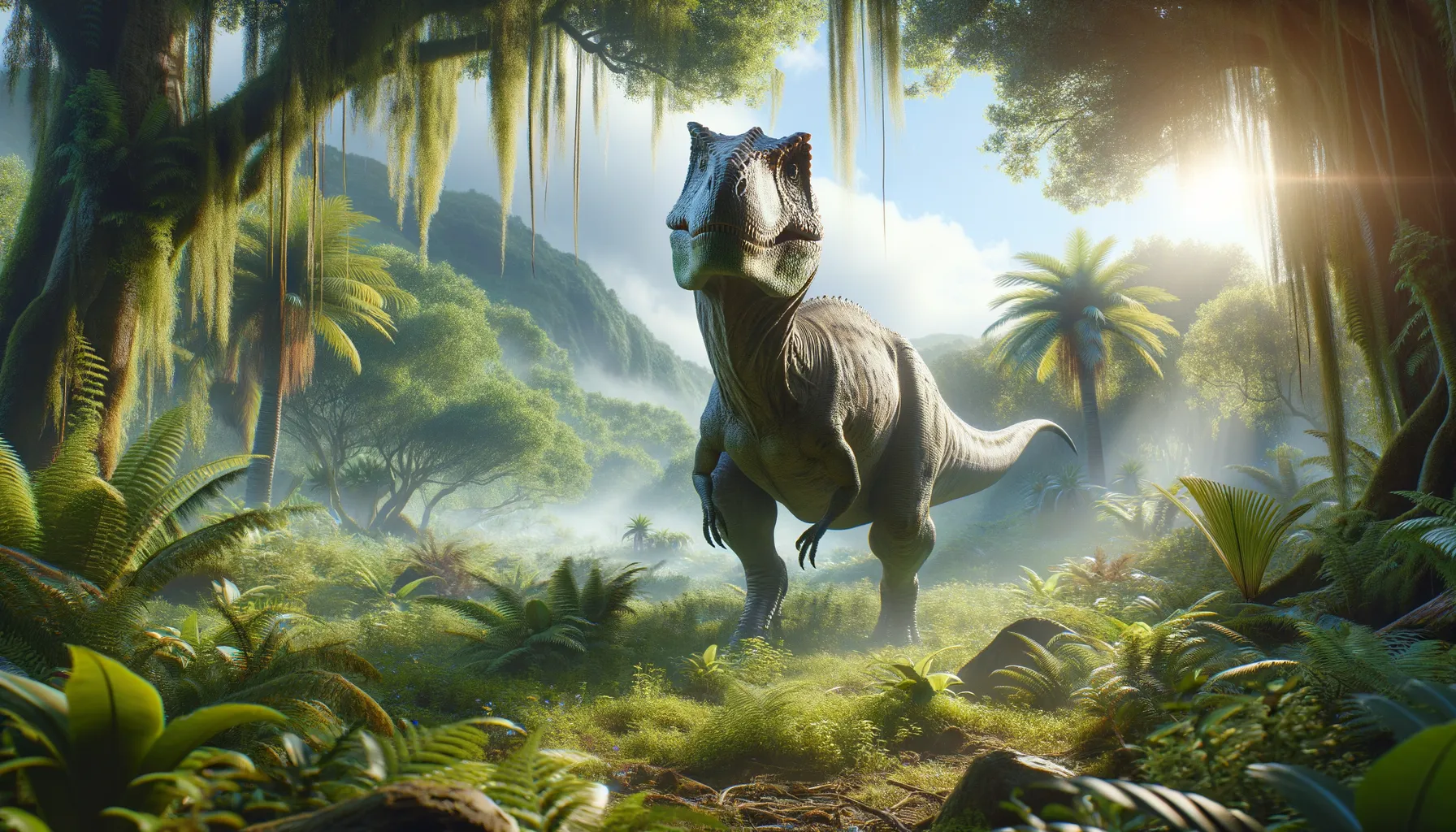
Brachyrophus
The steady grazer of ancient landscapes.
Period
Cretaceous
Length
Roughly 12 meters from head to tail.
Height
About 4 meters at the hip.
Weight
Approximately 3,000 kilograms.
Brachyrophus was a remarkable sauropod dinosaur known for its moderate size and adaptability. Living during the Cretaceous period, it thrived in lush environments rich with vegetation. Its physical structure suggests it was well-suited for foraging. As a herbivore, it played a crucial role in its ecosystem, likely influencing the plant life of its time and interacting with a variety of species.
Diet
Brachyrophus was herbivorous, primarily feeding on varied vegetation it could reach with its long neck. Its diet likely included leaves, ferns, and other soft plant materials. By consuming significant amounts of plants, it helped in maintaining the balance of its ecosystem.
Hunting
As a herbivore, Brachyrophus did not hunt but was always alert to predators. It may have relied on its size and group behavior to deter carnivorous dinosaurs. Social behaviors could have included shared vigilance among group members.
Environmental challenges
Brachyrophus faced challenges such as climate changes, which could have affected the availability of plants. Seasonal variations might have required it to migrate to find sufficient food. Natural disasters like floods could have altered its habitat, making survival more demanding.
Speed
Moderate, relying on steady locomotion.
Lifespan
Estimated to be around 70-80 years.
First discovery
Discovered in the early 20th century in South America.
Fun Facts
- Brachyrophus is a dinosaur known for its short snout, which is quite unusual among its relatives.
- It roamed the Earth during the Late Cretaceous period, around 70 million years ago.
- Unlike many large dinosaurs, Brachyrophus is believed to have been a plant eater, munching on leaves and vegetation.
- Fossils of Brachyrophus have been found primarily in what is now Mongolia.
- This dinosaur wasn't particularly large, estimated to be about the size of a modern-day cow.
- Despite its smaller size, Brachyrophus had a thick, sturdy build, suggesting it was well adapted to its environment.
- Paleontologists are fascinated by Brachyrophus due to its unique physical features, which help in understanding dinosaur diversity.
Growth and Development
Brachyrophus likely followed a steady growth pattern similar to other sauropods, requiring several years to reach maturity. Juveniles might have been particularly vulnerable to predation, necessitating protective strategies within groups. Development would have included a gradual increase in size, requiring substantial nutritional intake.
Habitat
Brachyrophus inhabited floodplains and forests, benefiting from the abundant plant life. These areas provided the necessary resources for its diet and supported its needs for sustenance. The presence of rivers may have provided water and opportunities to cool during warmer times.
Interaction with other species
Brachyrophus coexisted with various other dinosaurs, including carnivores and other herbivores. It probably shared its habitat with creatures of different sizes, impacting and being impacted by their environmental roles. Cooperative behavior in its species might have included group protection against threats.
Natural lifespan
Brachyrophus had a natural lifespan of around 70 to 80 years.
Reproduction
Reproduction in Brachyrophus might have involved laying eggs in nests built in safe, concealed areas. Hatchlings would have been relatively self-sufficient but still needed some protection from adults. These dinosaurs could have had specific breeding seasons that coincided with optimal environmental conditions.
Social behaviour
Brachyrophus may have lived in herds, providing safety in numbers. Social interactions likely included mutual grooming, protection of young ones, and communal foraging. Group dynamics might have been influenced by the size and structure of family units.
Fossil locations
Fossils of Brachyrophus have been primarily found in regions of present-day South America. These fossils provide insights into its anatomy and lifestyle. The location of these findings indicates areas that were once rich in vegetation and supportive of large herbivorous dinosaurs.
